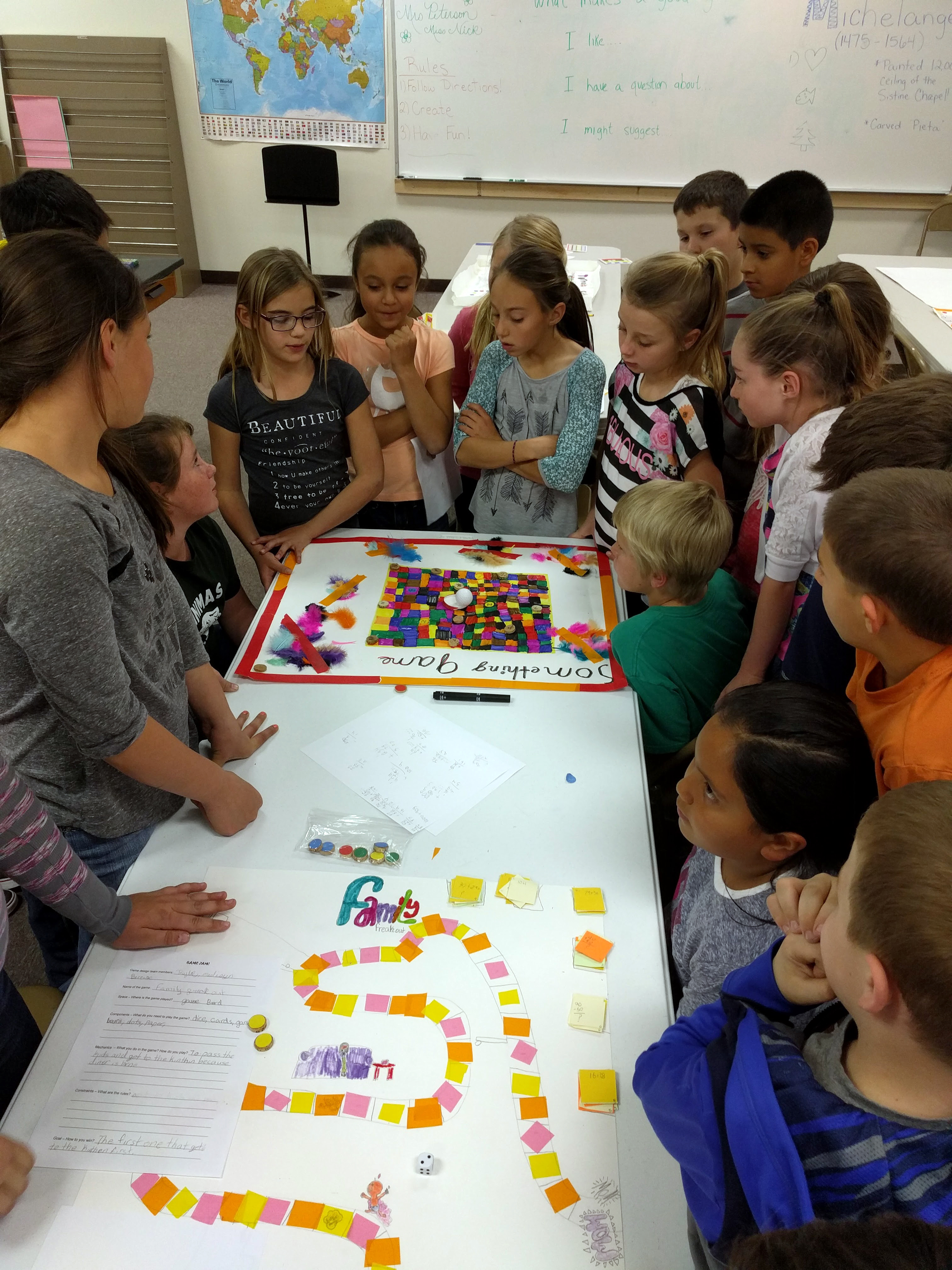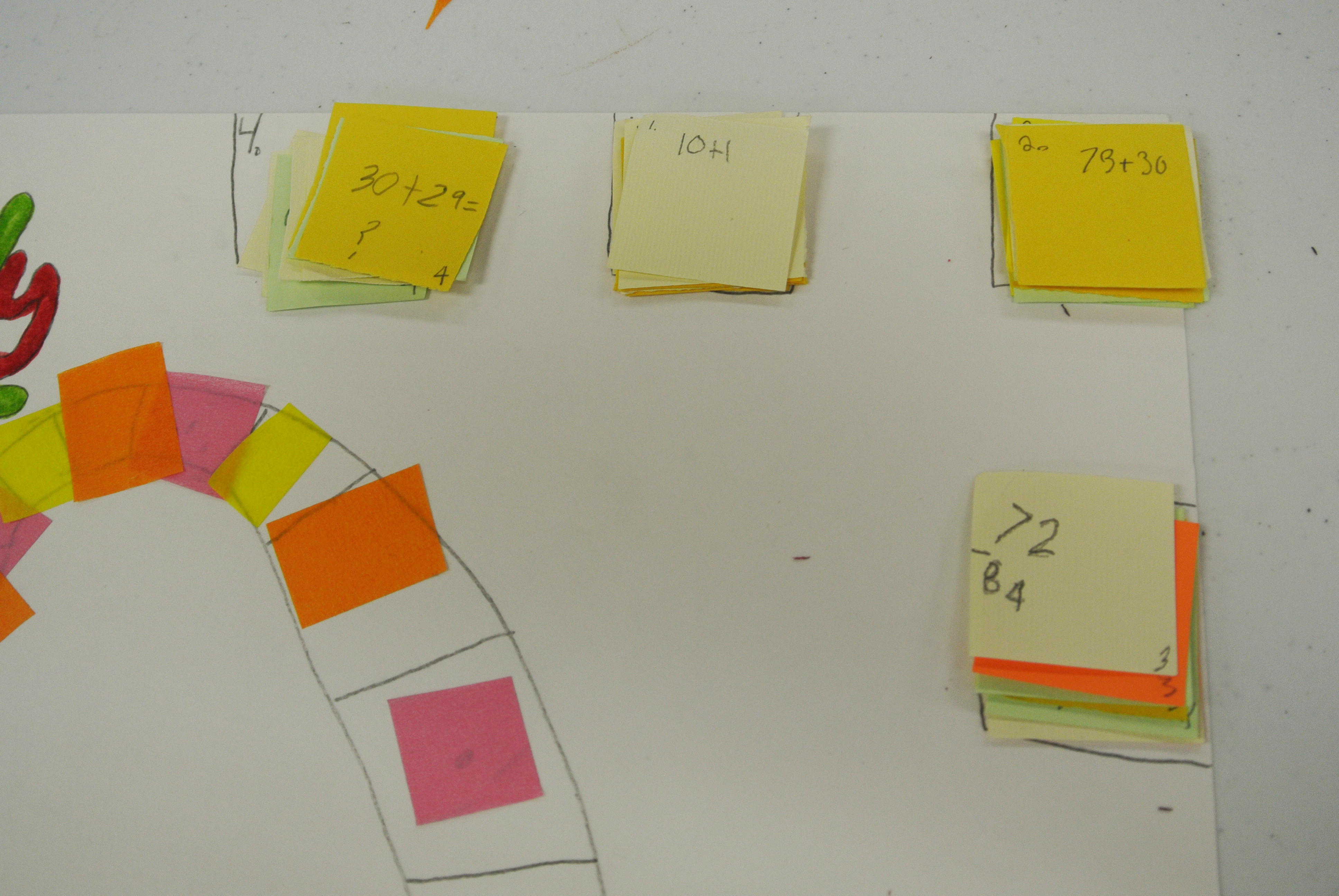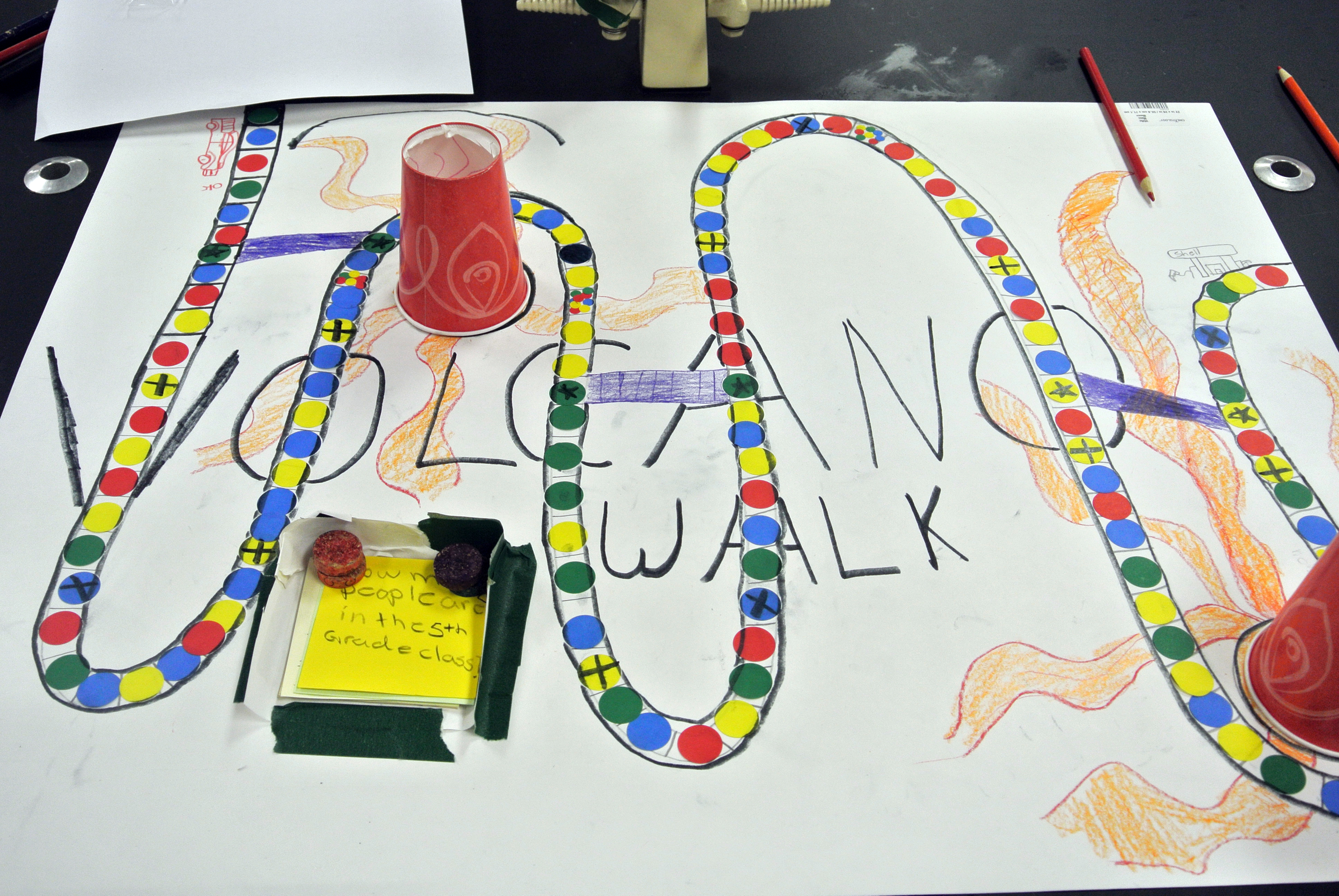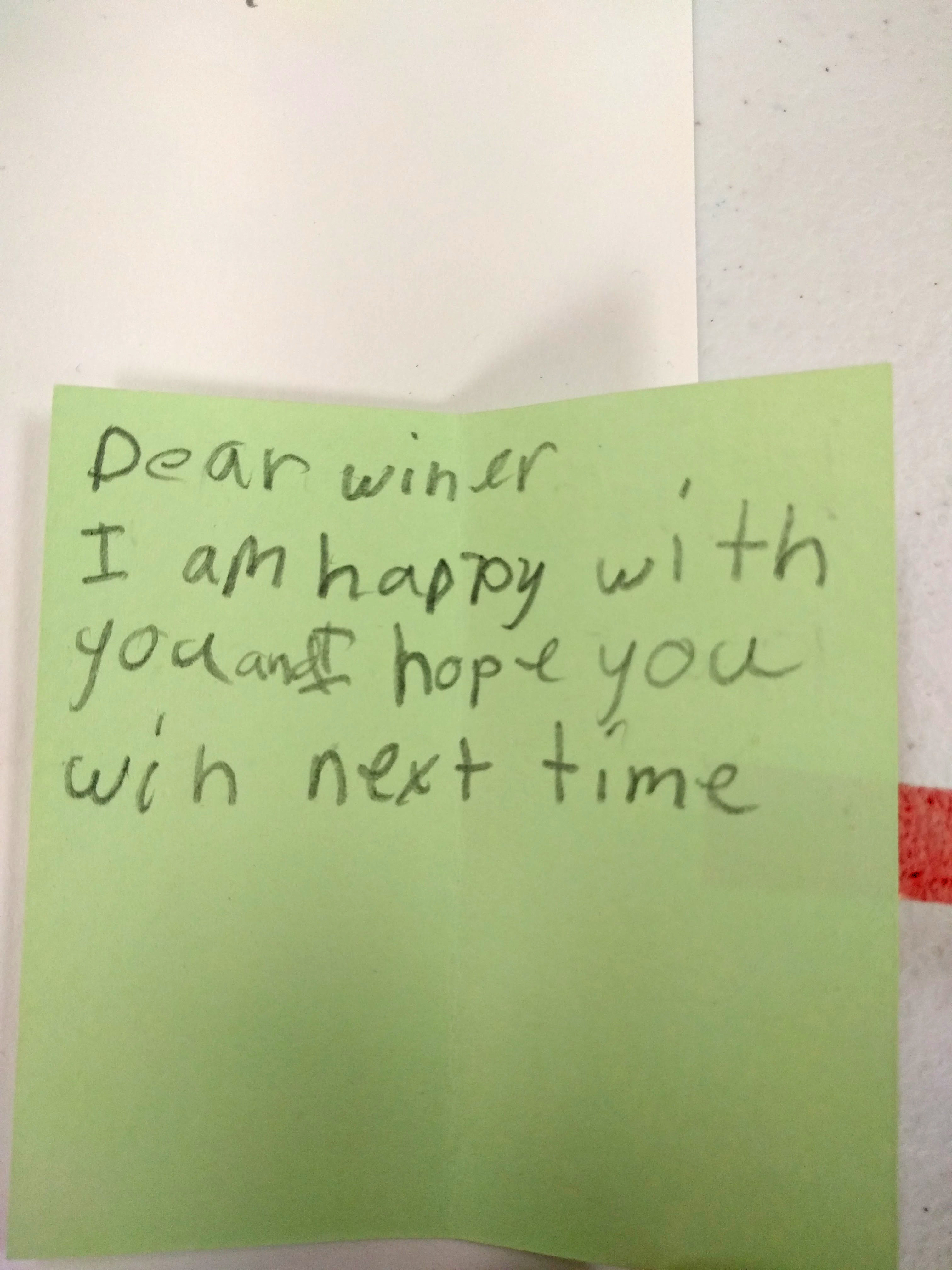This week, I conducted a Maker Day at a local school as a part of our library creativity project.
We worked with 30 grade K-2 students in the morning and another 30 grade 3-5 students in the afternoon.
In the morning, we started with the Marshmallow Challenge. No matter how many times I do this, I always have fun and learn new things. This was a young group and had the highest “completion” rate of any group I’ve facilitated yet — 7 of 8 groups had a tower standing at the end. One of my favorite parts was when we debriefed afterward, and I shared the fact that kids usually do better at this than well-educated adults. When I asked the kids why they thought this might be, one supposed it was because adults had larger hands that made it more difficult.
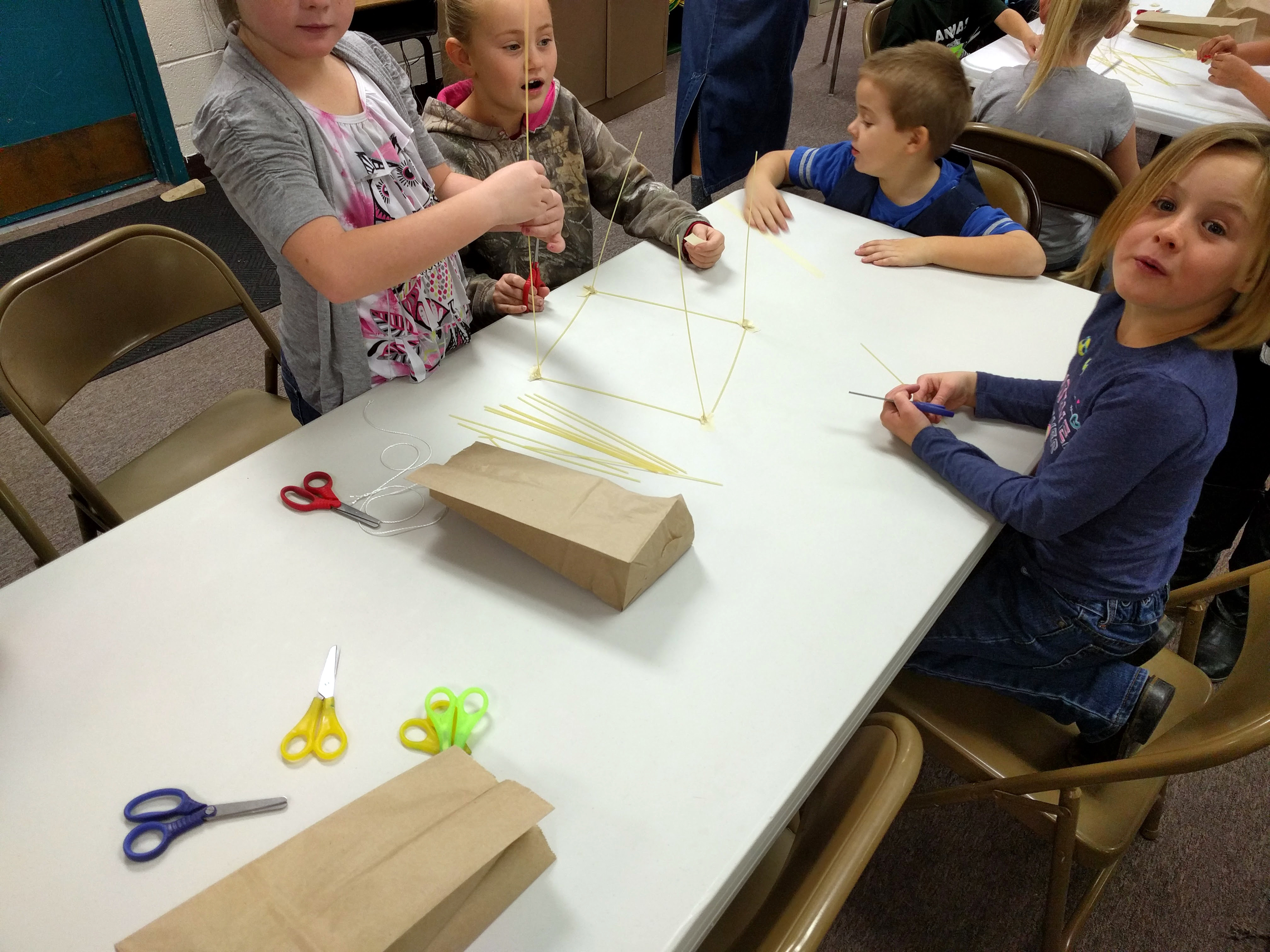
After this, we had the kids make puppets and do puppet shows as a storytelling exercise. I was a little worried about this activity, because I thought the kids might be too shy to do it. I was completely wrong — the kids jumped right in and were amazing. We provided very little structure or suggestions, which worked well. Kids worked with what they were comfortable with. Some used supplied images to make their puppets; others drew their own pictures. They self grouped and were eager to do puppet shows. I had allotted an hour for this, and we could have gone twice that long.
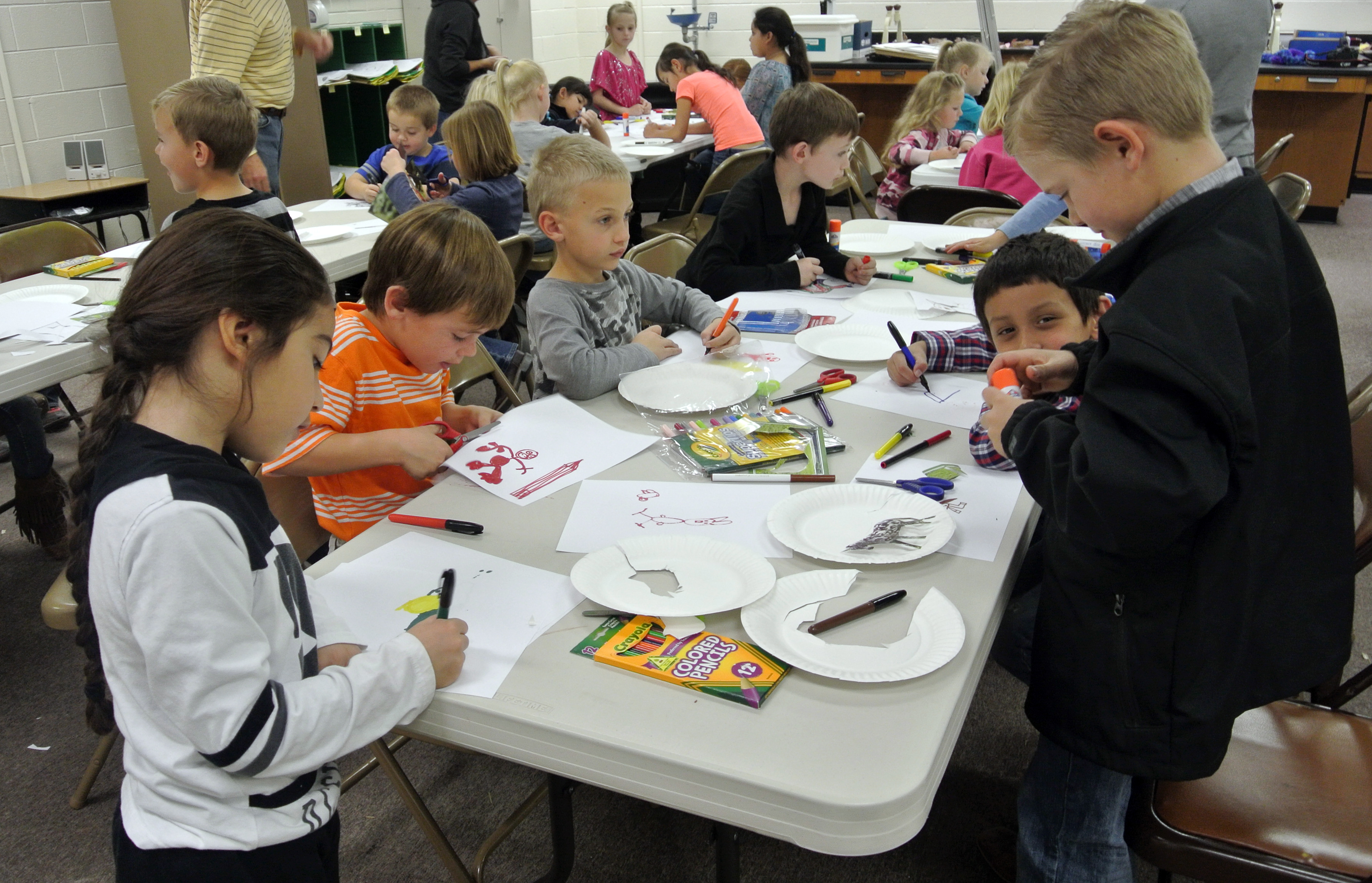
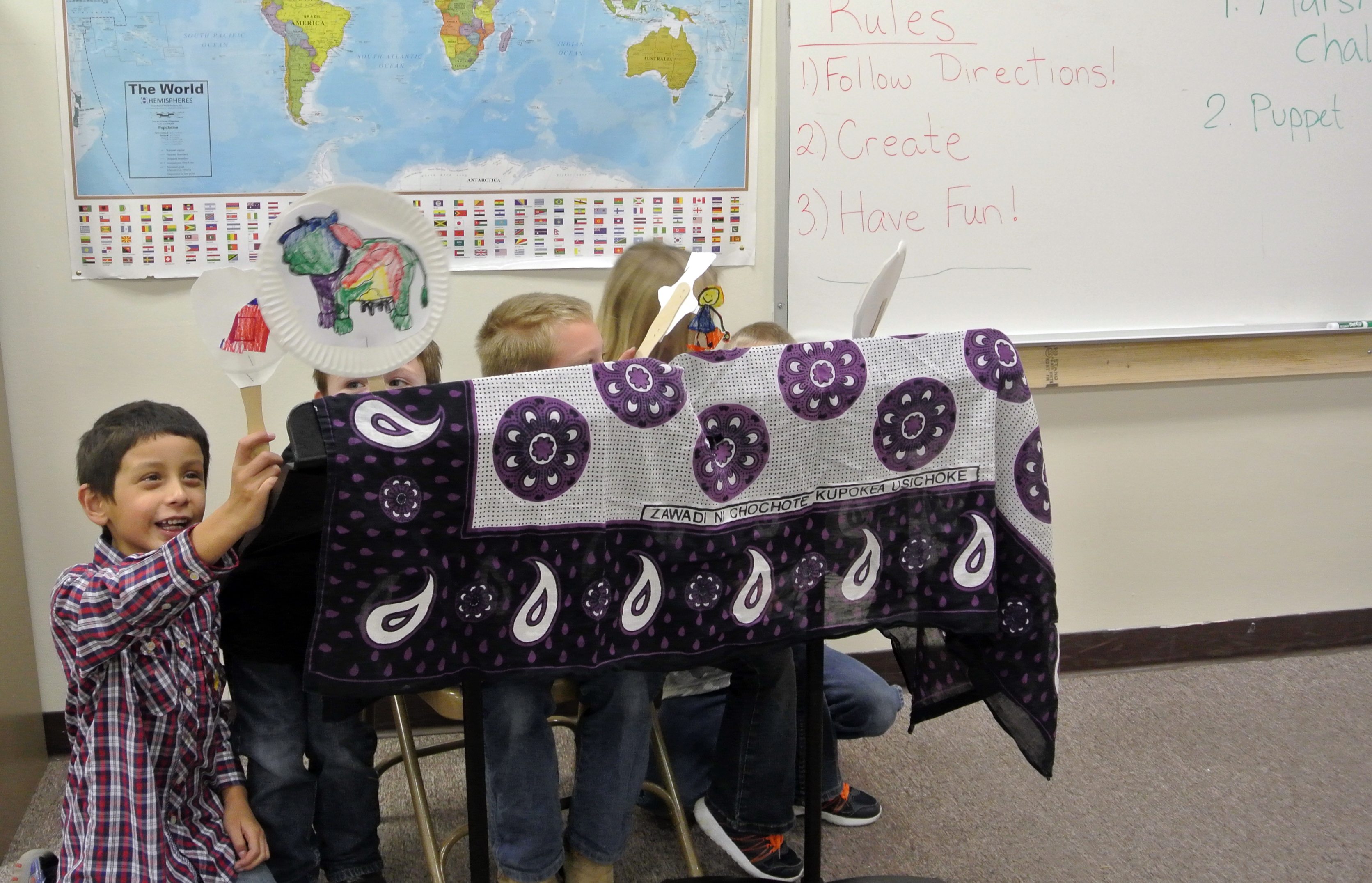
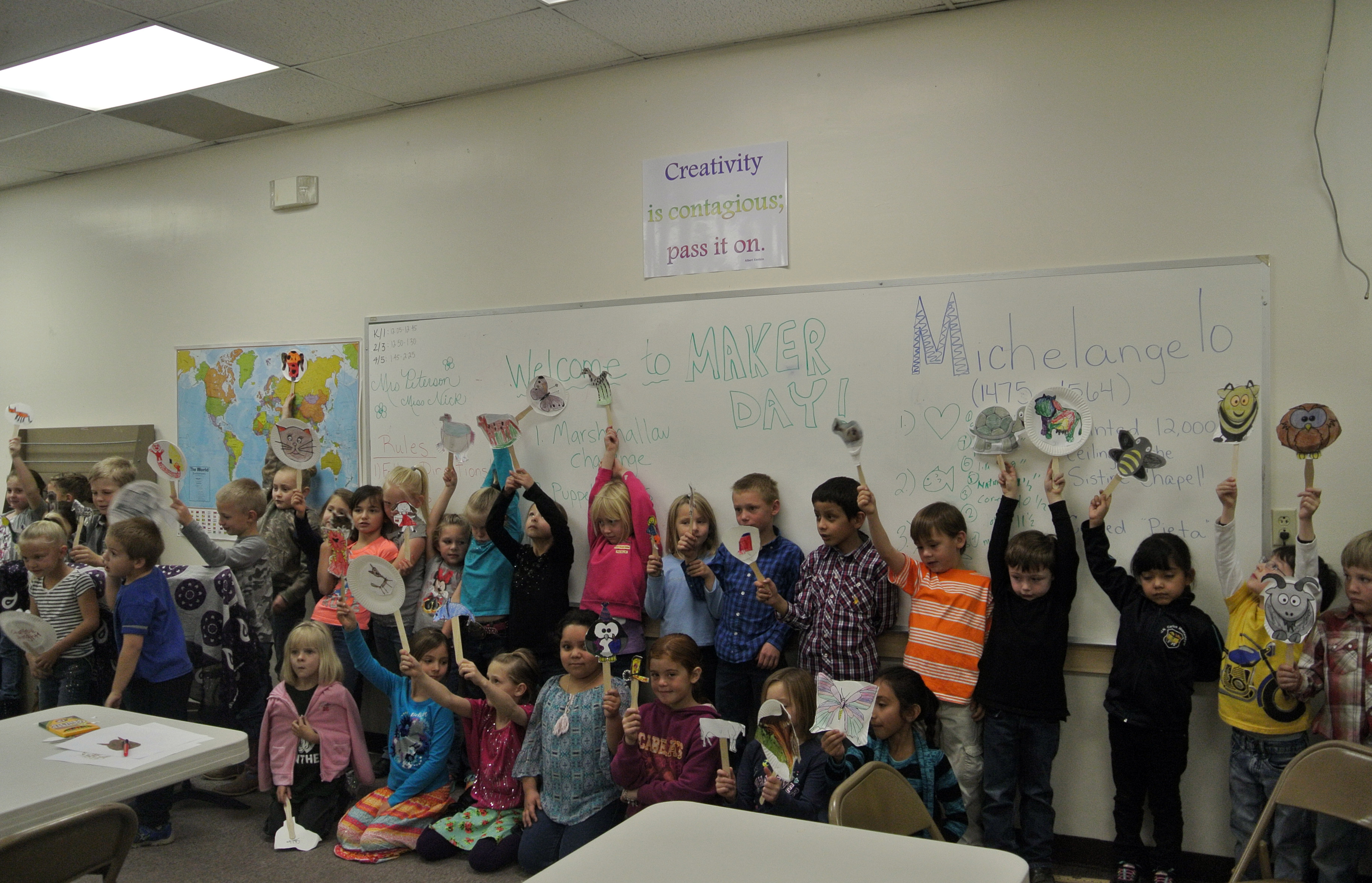
The last morning activity was to make books. We started with pre-folded booklets made with these instructions. (I had wondered if this size might be too small for lower elementary, but they were just fine.) Then the kids wrote their books. Some students chose to use mainly pictures, while others included words. After their books were done, covers were attached, and students decorated those as well. Again, students were excited about this activity and worked well with little direction.
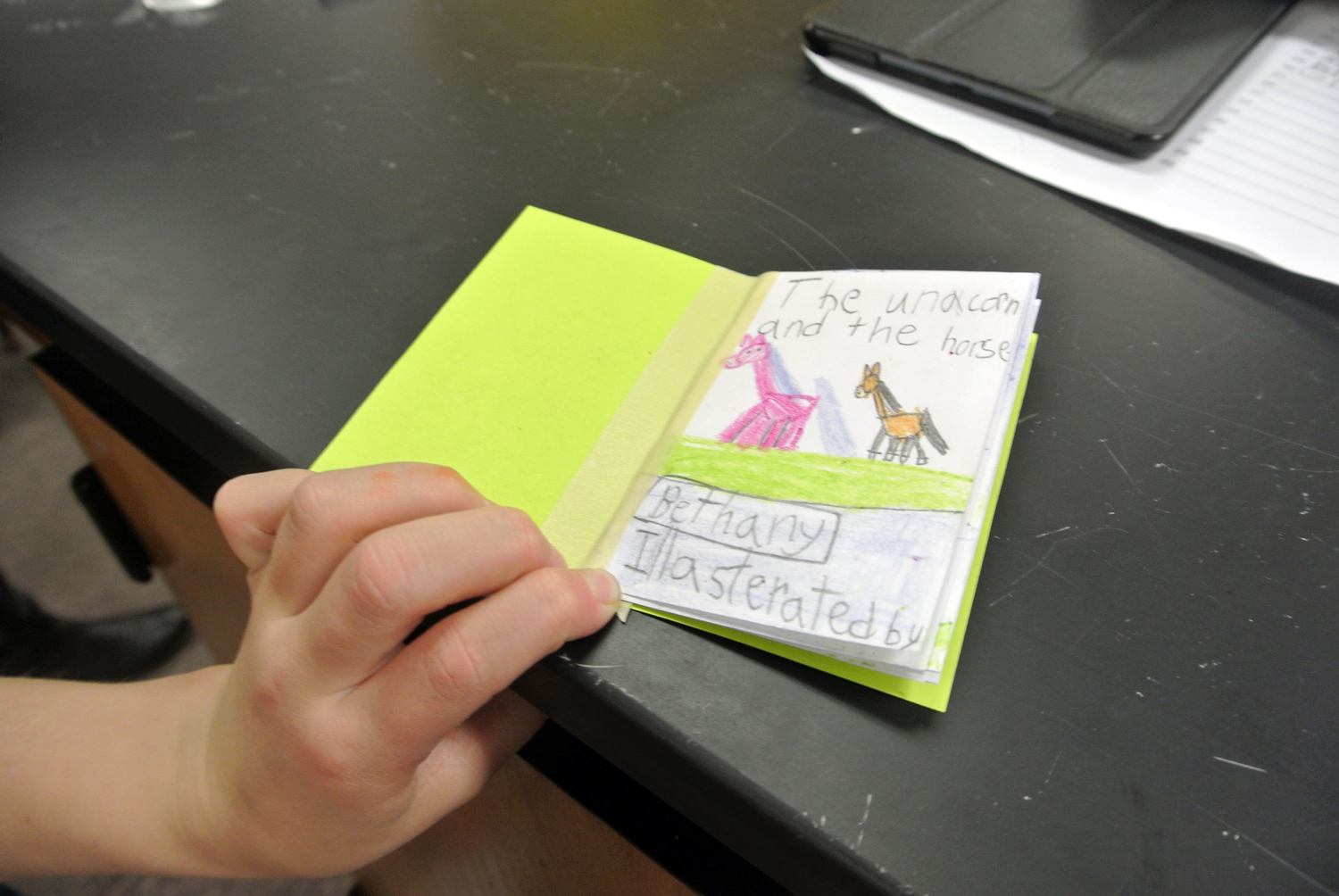
In the afternoon with the older students, we did a game jam (the second one I’ve done). This time we started with a discussion of what the students favorite games were and then moved on to talk about what makes a game (space, components, mechanics, constraints, a goal, and FUN).
The students were asked to form teams and make their own games using the following supplied materials:
- Poster board
- 2 dice
- 2 golf balls
- 2 cups
- Misc pieces
- Misc cards
Other art supplies were also available. They were also given this handout to complete.
They jumped right into it and made some pretty amazing games. Highlights were a game that used cards based on math problems and some very thoughtful work of thinking through and writing down rules and other guidelines. And it’s always a thrill to me when kids ask if they can take their work home and then are so excited to do so!
After they made their games, we had each group show their game to the rest of the classes and then give feedback using the following prompts:
- I like…
- I wonder…
- I might suggest…
The students were really thoughtful about this, and it worked very well. We actually had to rush it a little because of time constraints. There was a little time for students to play each other’s games, but not enough time to iterate. This was discussed though as a part feedback. In the future, I might give less time to game design and creation and more time to critique and iteration.
